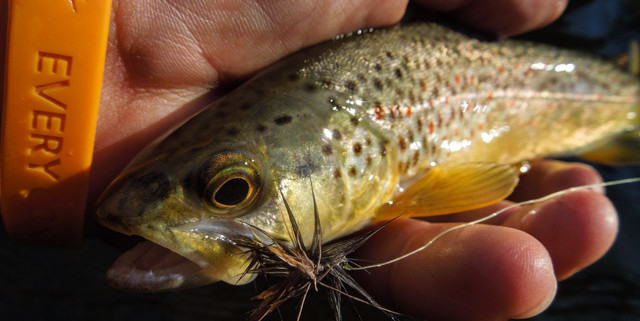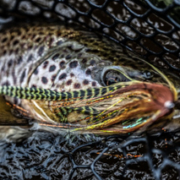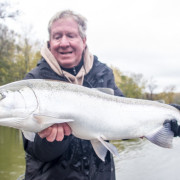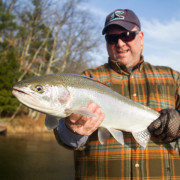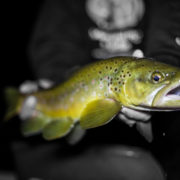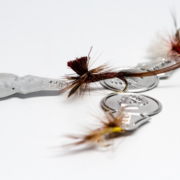Learn how to tie up double dry fly rigs
Double Fly Rig
There are times when trout are rising that you are unable to determine what fly they are eating. There are also times that trout aren’t rising much or at all that you would still like to catch fish. There is a tactic that we use to combat both of these situations. It’s the double fly rig.
Many or most of you have used or heard of the “hopper-dropper rig”. That is attaching a bead head nymph to a hopper pattern and using the hopper as your strike indicator. It can be very effective at times. It works because you are presenting two different food sources in different water columns at the same time.
Two Dry Flies
We use the same method with two dry flies. This can be the same fly with two different life stages, two completely different flies or the same fly times two! It is deadly effective during a hatch, especially a light one. By presenting an emerger and a dun you are covering both bases. The emerger attracts lots of attention because mayflies are vulnerable at that stage.
Complex Hatches
This method is also valuable during complex hatches. That’s when there are several different bugs on the water at the same time and trout are eating but you are unable to determine which bug they are eating. This can be common in June when there are several different mayflies possible during the evening. Sulphurs spinning along with bat flies doing the same, Isonychias hatching and/or spinning and maybe Brown Drakes. All of this occurring at dark. It can be tough to figure out which morsel the fish are eating!
To present two dry flies at once tie a piece of tippet to the bend of the hook using an improved clinch knot. Make sure you moisten the monofilament prior to cinching it down to maintain maximum strength. See the video that explains how to tie this below.
Tippet
The size of the tippet should be either be the same size as the tippet being used on the first fly or one size smaller. I make the decision on size based on two things. If I’m worried about losing two flies I use the smaller monofilament so if I hook the bottom fly on something and need to break it off I have a chance of saving the top fly. If I’m casting to or searching for big fish I will put both flies at risk so that I have stronger tippet.
Try this method, you’ll find it works!
Captain Chuck

